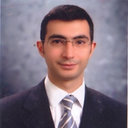Ectodermal dysplasia: otolaryngologic evaluation of 23 cases.
Cuvinte cheie
Abstract
The aim of this prospective study was to improve the quality of life of and reduce morbidity for patients with ectodermal dysplasia by assessing their actual and potential ENT pathologies, and offering methods of prevention and treatment. The study was conducted between 2006 and 2008 and included 23 patients diagnosed with ectodermal dysplasia. The major symptoms of ectodermal dysplasia were evaluated. Patient histories were obtained in all cases, and a complete head and neck examination was carried out. Of the 23 patients (11 males and 12 females, aged 5 to 45 years) diagnosed with ectodermal dysplasia, 22 had hypohidrotic ectodermal dysplasia and 1 had ectrodactyly-ectodermal dysplasia-clefting syndrome. In all patients diagnosed with hypohidrotic ectodermal dysplasia, the salivary glands were examined by ultrasonography and, when necessary, by scintigraphy. Hearing defects in patients with otologic problems were determined by audiometric examination: 39.1% of the patients had hearing loss, 43.5% had otitis media, and 39.1% had impacted cerumen. The most common rhinologic findings were saddle nose deformity in 56.5%, nasal obstruction and nasal dryness (52.2% each), and chronic rhinitis/rhinosinusitis (34.8%). The most common oral and oropharyngeal findings were difficulty chewing in 82.6% and dry mouth in 78.3%. All 23 patients had required dental work. Because this disorder affects several aspects of the body, its treatment requires a multidisciplinary approach, with the otolaryngologist being a vital part of the management team.


